Chicken Tractor
For those who don’t know a chicken tractor is a cage where chickens can forage on the ground in an enclosed area. This is being done while the birds are primarily on feed. It allows them some freedom and protects them from predators. It is primarily done for what are called meat birds. The cage is moved at least once a day to allow fresh grass and keep them out of their droppings. There are two major designs for these. One is by Joel Saliton and the other by John Suscovich. Both are wonderful designs and should be considered if you are thinking of one. In addition, Saliton and his books and YouTube videos are a must for anyone thinking of homesteading or hobby farming. That being said this is about my design and its reasons. I would like to acknowledge the help of my grandson Greydon my wife Zeze and her niece Damaris. Most of the pictures are of the finished design and I will go through the reasons I did it this way.
The sides are covered in ½ inch hardware cloth to thwart predators.
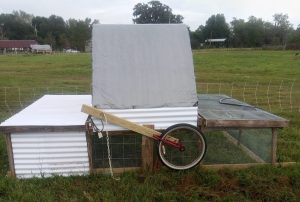
The size is 8ft. by 11ft. Most agree that chickens need between 1 ½ and 2 square feet as they grow. We generally do 50 at a time so this is a good size.
We live in Florida. The theory of keeping it as light as possible disappears during massive thunderstorms and hurricanes. Still, it needs to move. The bottom board is a deck board, 1 inch with rounded edges. Also an angle cut on the very front. The wheels are large and off an old bicycle. They are located near the center. Now the explanation. First large wheels turn easily and don’t drop in small holes. Being in the center allows a pivot point where the weight is at a minimum. I am in my seventies and have had heart problems and my brother who is the other one to move it is in a wheelchair. If you think about it this means he can either lift or move but not at the same time. This design makes it easier.
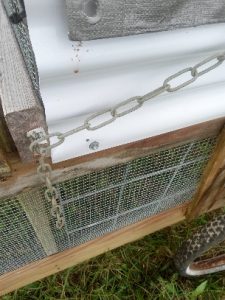
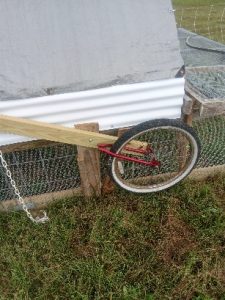
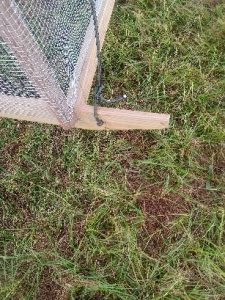
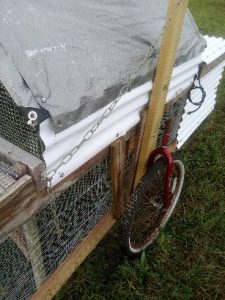
The wheel is on a fulcrum and can be raised from 1 inch to 5 inches and held by a chain. 1 inch for small birds and up to 5 inches for transport. One advantage of each side being independent is the ability to raise one side a little higher and turn around the unit. I should mention the pull mechanism is just a rope.
Now other features. The hoop part in the center is primarily for visibility. Saliton’s design is very hard to see the back end and chickens get run over especially when small. This design allows you to see them. Also, the front and rear boards are placed at an angle. Chickens’ feet go in both directions and are easy to pin with a flat board. This angle allows them to be bumped while they can still move.

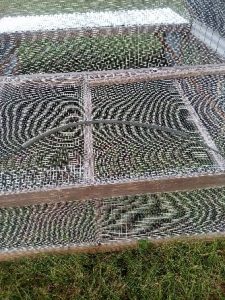
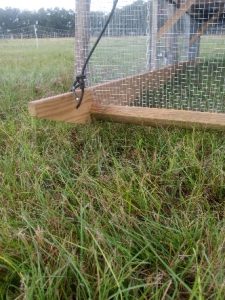
The hoop is made from a cattle panel, which considerably increases its rigidity. It and the back are covered to keep the rain off. On the back end, there is a covering to act as a windblock if it is cold. Also, I have two pieces of plywood to drop in to cover the rear if needed. Raising the birds in Florida we do it more in the winter months than summer. The temperatures are mild compared to the sweltering summers. Both the front and back are hinged for easy access to add water and feed. Also, it is very handy to gather them.
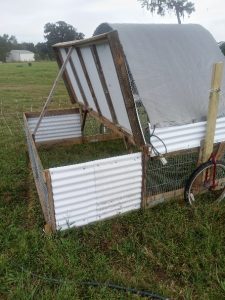
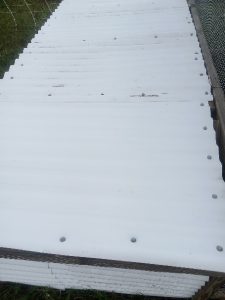
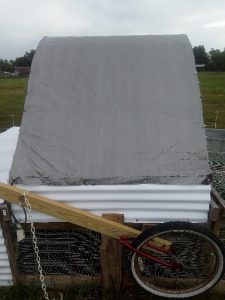
I am experimenting with watering systems that will move as the unit is moved, but for the feed I prefer to use troughs so they don’t bunch up while feeding.
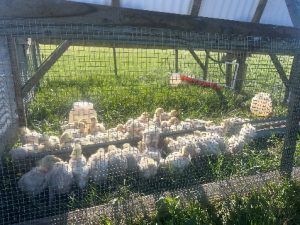
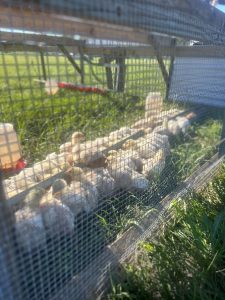
As they grow, they will fill it up more. I may add to this later but for now thanks for looking.


